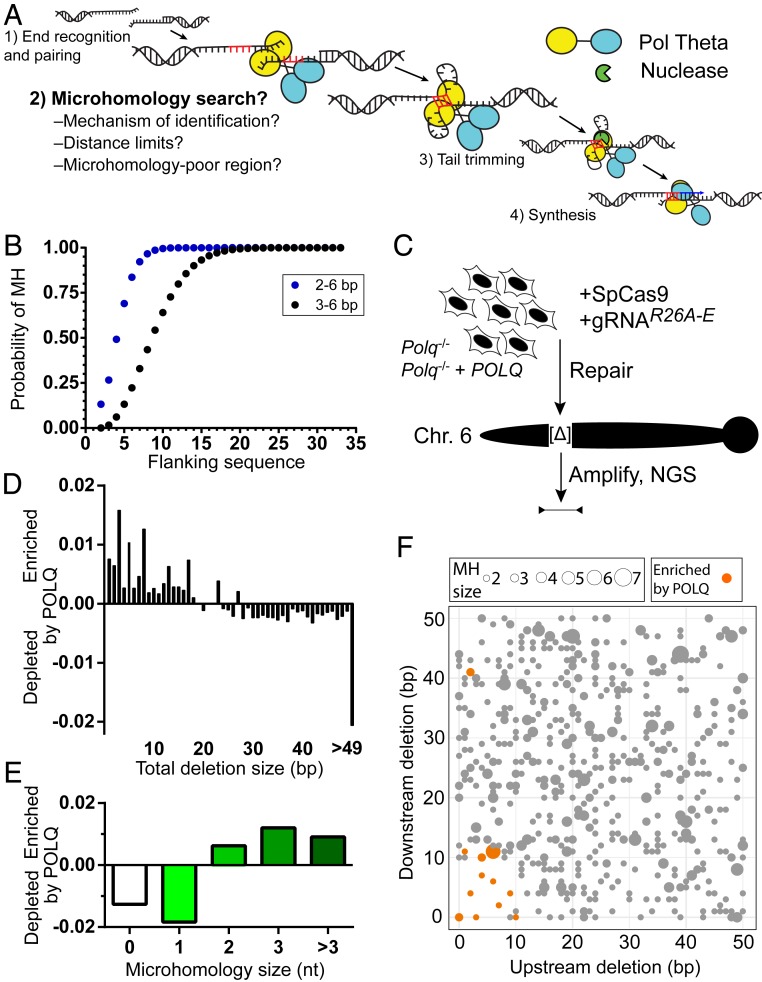Fig. 1.
Characterization of Pol θ-dependent deletions after a chromosome break. (A) Steps required for TMEJ, emphasizing a critical role for microhomology identification. (B) The probabilities of finding 2- to 6-bp (blue) or 3- to 6-bp (black) microhomologies (MHs) were determined for sets of 100,000 randomly generated pairs of sequences of increasing size (flanking DNA sequence), from 2 to 33 nucleotides (nts). (C) Cas9 targeted to five different break sites in the Rosa26 locus (R26A-E) were separately introduced into transformed MEFs from Polq−/−-deficient mice engineered to express human POLQ or not. Chromosome break repair products were recovered 24 h later, amplified, and characterized by NGS. (D and E) The difference in the fraction of repair products with noted size of deletion (D) or microhomology (E) in POLQ-expressing cells vs. Polq−/− was averaged across all five break sites tested. (F) Filled circles denote the location of all microhomologies 2 bp or more relative to the break site for all five break sites, with microhomology size noted according to the size of the filled circle. Deletions enriched in cells expressing WT POLQ vs. Polq−/− cells in triplicate experiments are shown in orange and were identified using a two-tailed t test and the Benjamini–Hochberg procedure to adjust P values for multiple comparisons, with a false discovery rate of 0.05.

